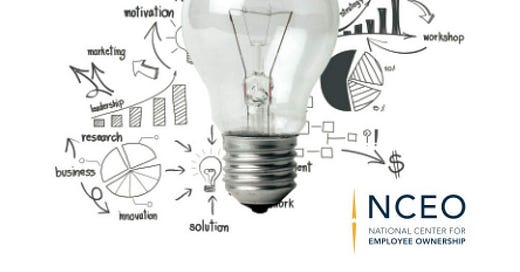TLDR: Beyond Engagement by Corey Rosen is a solid, short, story-based read for leaders that want to build an ownership culture at their company.
A quick summary: Corey Rosen, a prolific author and decades-long advocate of employee stock ownership plans, builds on research demonstrating that employee involvement in decision-making is the key that unlocks all the benefits of having an employee-owned firm.
Giving employees shares isn’t enough; neither is “employee engagement.”
When he says employee involvement, Corey Rosen means something pretty specific:
“What matters is the degree to which employees can contribute ideas on a regular basis” and that they believe those ideas will be taken seriously.
It can’t just be an “open door” policy; it has to be structured in to the way the companies solicits and acts on new ideas.
This, Rosen argues, is the magic of employee ownership. It isn’t that being an owner makes employees work harder or be more productive; it’s that they develop a real sense of ownership over the company and the decisions that affect their work.
Most importantly, the benefits of EO emerge when employees can make decisions (without management, or jointly with management) about their working conditions, work organization and processes, and product development.
In the rest of the book, Rosen covers different levels at which firms can involve employees in decision-making.
Chapter 2 starts with leadership, which Rosen frames as the ability of a leader to develop an ownership culture by way of establishing psychological safety: Establishing shared expectations and meaning, instilling confidence that employee voices are welcomed, and orienting the company towards continuous learning.
Chapter 3 introduces and explains open book management, in which companies begin to share financial information with employees and train them to understand how their decisions affect financial outcomes.
Chapter 4 guides readers in how to build “idea generation process,” moving past open door policies to institutionalized pathways for employees to bring up and act on new ideas.
Chapter 5 covers how to build work-level teams, pushing decision-making out to the people that know the job best.
Chapter 6 considers how to involve employees in strategic planning, one level-up in decision-making from work-level teams.
Chapter 7 explores how and whether to involve employees in board-level governance, or what the Europeans would call codetermination.
Bottom Line: Lots of advocates of employee ownership talk about building an ownership culture. In a deeply-researched, evidence-based, story-driven book, Rosen shows how it’s done.
Go Deeper: Pick up a copy of Beyond Engagement from the NCEO website.
Also see Rosen and Case’s 2022 book, Ownership.
This book pairs well with two great books with the same name (!): Lead Together and Lead Together.



